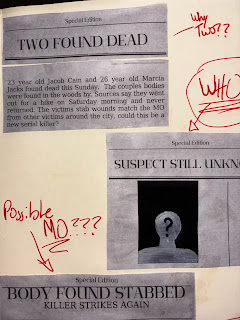Our Gengre Research-Action!
Hello viewers! Today we are continuing our research for our genre for our opening sequence! We have already gone through thriller, so now we are going to explore the action genre!
Common camera angles I have seen in this genre are medium shots, Birdseye, over the shoulder, aerial, and long shots. A lot of these angles are implemented to build suspense for the character or the specific event happening. A lot of panning shots are used also to follow the action in a film. Commonly for fight scenes, high and low angle shots are used.
For camera movements, it is apparent that the action is followed through the use of the camera itself. It isn't very common to watch a fight scene from just one single angle or perspective. Camera movements such as tracking shots are frequently used to capture the very intimate elements of action movies that are very physical. Even in car chases during action movies, a point of view shot is commonly used to act as a passengers perspective of being inside the vehicle during the chase.
While researching and watching action movies for this blog, I observed a common type of lighting which remained to be a more bright ambiance of lighting, even if the action scene was taking place at night, there would always be an abundance of street lights or bright signs that still allowed the viewers to see every moment of the scene. In the Fast and Furious series, even when car chases were happening at night, it was very typical for there to be a lot of surrounding lighting either from street lights, signs, or any other natural lighting.
The settings of action movies can vary. The main aspect of action movies are to catch you by surprise and keep you on your feet. The movie Charlie's Angles has multiple scenes where the character was simply in the kitchen, or in a living room where the initial setting was calm and nonthreatening, then quickly builds to the climax of the scene and being action filled and potentially violent, all within a few seconds. This proves that action films take advantage of their settings and sometimes hide the suspense and urgency of an upcoming scene by making the setting a more neutral area.
Common editing tecniques such as jump cuts are very frequently used. This is because it s difficult to watch or film one consecutive scene with little to no cuts during an action film. Multiple jump cuts molds the perspective of multiple people and or multiple feelings. Montages are also common in editing of action films because they help build the storyline as the scene progresses. Spontaneous and extensive features of action films could also call for intimate objects or features such as flames, explosions, falling cars or buildings. In a lot of Marvel movies, it's commonly seen where buildings are collapsing or props are being destroyed or altered in some manor, this sometimes cannot be replicated in real life, therefore, through the power of editing, it must be done through CGI or any other type of after affect.
The sound elements that are common in action movies are typically loud along with suspenseful music that builds a sense of urgency. Loud crashes or explosions have to stand out and replicate them as accurately and realistically as possible. A lot of these sounds are also computer generated, but a lot with loud noises, eugenic sound of screams or large groups of people in the background of the scene are also common.
Dialogue is very important in actions films. A lot of the most famous lines form movies are in a moment of unexpected urgency right before a big moment in a scene. Typically, in movies where there are heroes and villains, it is common for the characters to have a catch phrase or to say something in advance of a fight scene. You may think that sense there is a lot already taking place during an action scene, that it would be difficult for the characters to have an open dialogue during that portion. but action films commonly feature full conversations of dialogue that make the scenes even more suspenseful and keep viewers on their toes even more.
Some elements of this genre that I might consider incorporating would definitely be the sound, because sound, even if just the background, can tell a lot about a situation without much dialogue. For example, any background screaming or chatter during an action scene tells a lot about the setting and the type of film without having to incorporate anything else. I would also like to employ the element of editing, which will be needed regardless, but any features such as explosions or flames or destruction, that cannot be imitated in real life, would be very helpful and add to the genre.



Comments
Post a Comment